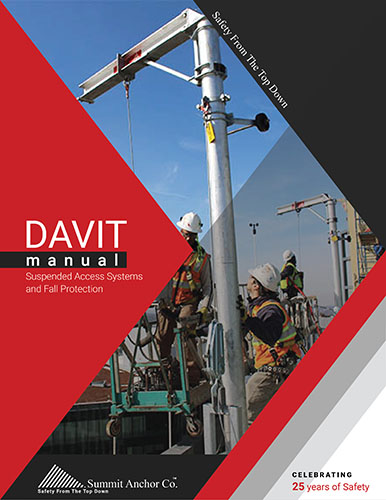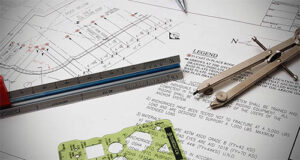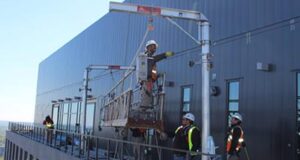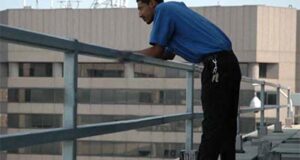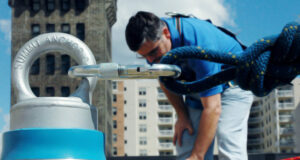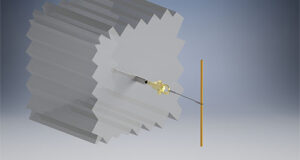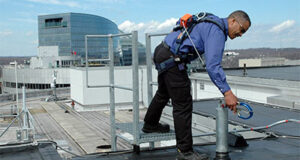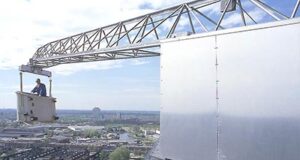Suspended Scaffolds & Powered Platform Systems
Davit and Outrigger Manual
- Davits: For Ground Rigging Platforms
- Davits: For Roof Rigging Platforms
- Davits: For Rope Descent Systems
- Davit Layout & Configuration
- Davit Space Set-Up Requirements
- Davit Setup Instructions
- Davit Base Connection Details – Concrete and Steel
- Davit Capacity Requirements
- Platforms Power Requirements for use with Davits
How does a powered platform work?
A two-point swing stage is suspended by wire ropes typically connected to motors mounted on stirrups at each end of the platform. A powered platform can be lowered or raised using the hoist motors. The workers may stop and remain suspended at any location along the wire ropes to perform work. This system is used by window washers, construction and maintenance workers. See requirements below that govern the use and design of suspended scaffolds:
OSHA 1019.66 Powered platforms for building maintenance
- ANSI A-120 Powered Platforms for Building Maintenance
- OSHA Subpart D for temporary swinging scaffolds
- OSHA subpart L of 29 CFR part 1926 for temporary swinging scaffolds in construction
- I-14 Window Cleaning Safety Standard
What is a Ground-Rigged Davit and what does OSHA require?
Ground-rigged davits are used in pairs to tie off suspension lines for scaffolding in locations that are difficult to reach, or where building features are not designed to support the load of the suspended equipment. Scaffolding must be rigged from the ground when tied to ground-rigged davits. See OSHA’s requirement below for ground launched davits:
“The point of suspension shall not exceed 300 feet (91.5 m) above a safe surface. Guide system(s) shall be provided which meet the requirements of paragraph (e)(2) of this section; and access and egress to and from the working platform shall only be from a safe surface below the point of suspension.” (OSHA 1910.66(f)(3)(iii)(C)(1) (2)
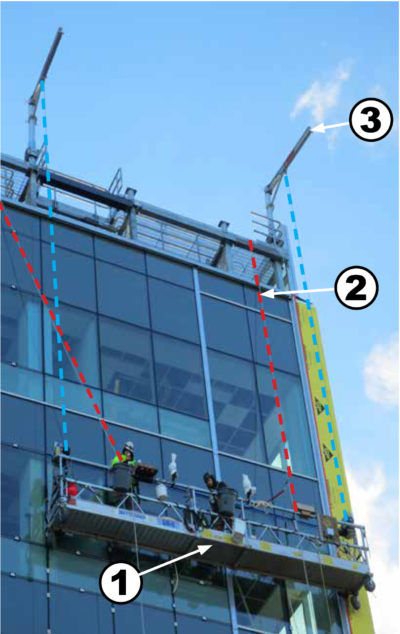
Suspended Swing Scaffold System – Ground Launched
1. Suspended Scaffold
2. Lifeline (Red)
3. Davit Arms attached to Suspended Scaffold by wire rope (Blue)
What is a Roof-Rigged Davit, and what does OSHA require?
Roof-rigged davits are typically used in pairs to tie off suspension lines for swing stages in locations that are difficult to reach and where building features are not designed to support the load of the suspended equipment. Roof-rigged davits are larger and heavier than ground-rigged davits but allow workers to launch scaffolding from the roof. See OSHA’s requirement below for roof launched davits:
“Access to and egress from the working platform shall be from a safe surface. Access or egress shall not require persons to climb over a building’s parapet or guard railing; and the working platform shall be provided with wheels, casters or a carriage for traversing horizontally.” OSHA 1910.66(f)(3)(iii)(B)(2) & (C)
Safety from the top down.
CLICK HERE to request a quote using our Design Assist Request.
Roof rigging a suspended swing stage
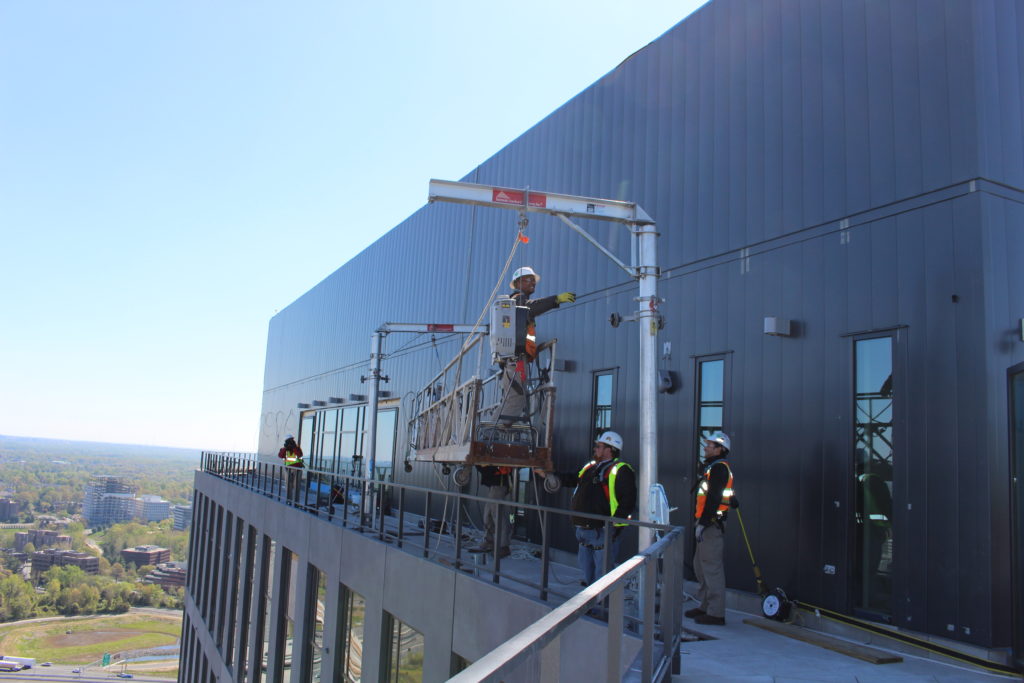
What is a tie-back used for?
A tieback is a taut wire rope “tied-back” to an anchorage capable of supporting 5,000 pounds to secure rigging equipment like parapet hooks or counterweighted outriggers. The purpose of a tieback is to prevent inadequately counterweighted outriggers from falling off the roof, or to prevent parapet hooks from falling in the event of parapet failure.
What is the loading requirement for suspension access equipment like davits or outriggers?
The rated load of a scaffold is based on the capacity of the hoist and platform. For example, a 20-foot swing stage rated for 1,000 lbs. with two 1,000 lbs. capacity hoists at each end of the scaffold will require the suspended rigging to be capable of supporting four times the rated load (1,000 lbs. x 4 = 4,000 lbs.). See OSHA’s requirement for swing stage loading below:
Scaffolds and scaffold components must be capable of supporting, without failure, their own weight and at least 4 times their maximum intended load. (29 CFR 1926.451(a))
